Recent Mold Remediation Posts
Mold Removal vs. Mold Remediation: What's the Difference?
3/13/2024 (Permalink)
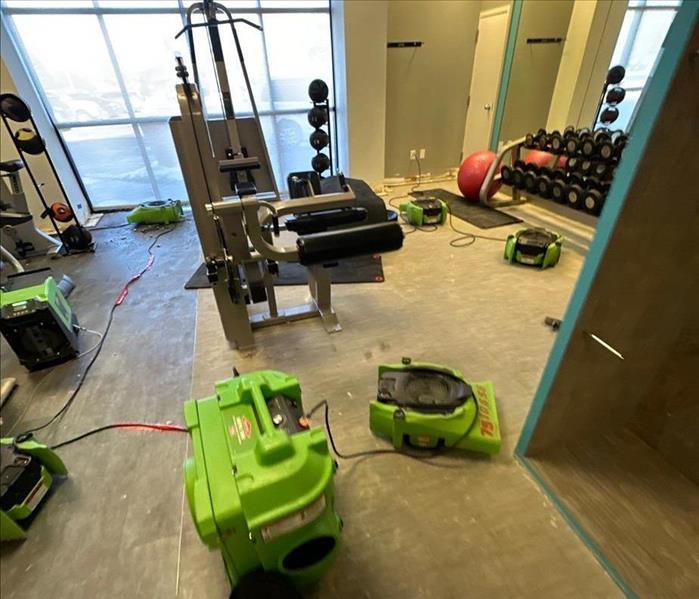 When faced with mold damage in your home, it's essential to understand the difference between mold removal and mold remediation.
When faced with mold damage in your home, it's essential to understand the difference between mold removal and mold remediation.
When faced with mold damage in your home, it's essential to understand the difference between mold removal and mold remediation. While the terms are often used interchangeably, they signify two distinct approaches to addressing mold issues. In this article, we will explore the major differences between mold removal and mold remediation to help you make an informed decision when dealing with mold damage.
Mold Removal 101
Mold removal refers to the act of physically removing mold from surfaces in your home. This approach involves scrubbing or wiping away visible mold growth using cleaning agents or biocides. While mold removal may eliminate the visible mold, it does not address the underlying cause or prevent future mold growth. Here are a few key points to consider:
- Surface-Level Approach: Mold removal primarily focuses on the visible mold on surfaces such as walls, ceilings, or floors. The goal is to eliminate the mold to create a clean and aesthetically pleasing appearance.
- Limited Scope: Mold removal typically does not involve addressing the source of moisture that caused the mold growth. As a result, if the underlying moisture problem is not resolved, the mold may reappear over time.
- Risk of Mold Spores: During the removal process, the disturbed mold spores can become airborne and spread to other areas of your home, potentially leading to further contamination.
- Appropriate for Small-Scale Contamination: Mold removal is generally suitable for small, isolated areas of mold growth, such as a small patch on a bathroom wall.
Mold Remediation 101
Mold remediation takes a comprehensive and systematic approach to address mold damage in your home. It involves not only removing the visible mold but also addressing the underlying cause, preventing further spread, and restoring the affected area to its pre-damage condition. Here's what you need to know about mold remediation:
- Identification and Source Elimination: Mold remediation starts with a thorough inspection to identify the extent of mold damage and the source of moisture. Remediation professionals focus on fixing the underlying issue to prevent future mold growth.
- Containment and Prevention: To prevent the spread of mold spores, professionals establish containment measures using barriers and negative air pressure. This ensures that mold spores are contained within the work area during the remediation process.
- Mold Removal and Cleaning: Mold remediation includes safely removing and disposing of mold-contaminated materials. Specialized cleaning agents and techniques are used to thoroughly clean and sanitize the affected surfaces.
- Drying and Restoration: After removing the mold, the affected area is dried using professional-grade equipment. Restoration may involve repairing or replacing damaged materials to bring the area back to its original condition.
- Preventative Measures: To prevent future mold growth, remediation professionals may recommend implementing moisture control measures, improving ventilation, and maintaining proper humidity levels.
Mold Remediation vs. Mold Removal
While mold removal focuses on eliminating visible mold growth, mold remediation takes a more comprehensive approach by addressing the root cause, preventing further spread, and restoring your home. For significant mold damage or recurring mold issues, it's best to enlist the help of professionals like SERVPRO® who specialize in mold remediation. If you want a thorough, long-term solution to mold damage in your home, trust the experts to provide you with effective mold remediation services. Contact us today to schedule your mold remediation appointment and restore a safe and healthy living environment in your home.
Mold Removal vs. Mold Remediation: What's the Difference?
1/30/2024 (Permalink)
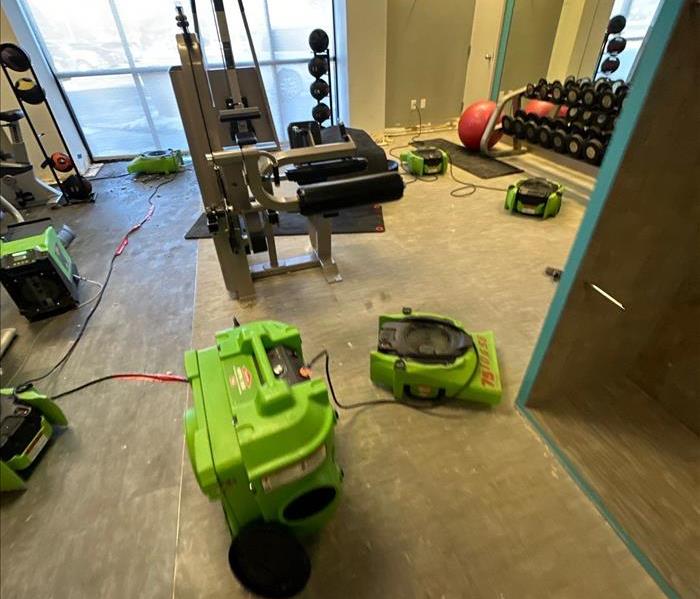 When faced with mold damage in your home, it's essential to understand the difference between mold removal and mold remediation.
When faced with mold damage in your home, it's essential to understand the difference between mold removal and mold remediation.
When faced with mold damage in your home, it's essential to understand the difference between mold removal and mold remediation. While the terms are often used interchangeably, they signify two distinct approaches to addressing mold issues. In this article, we will explore the major differences between mold removal and mold remediation to help you make an informed decision when dealing with mold damage.
Mold Removal 101
Mold removal refers to the act of physically removing mold from surfaces in your home. This approach involves scrubbing or wiping away visible mold growth using cleaning agents or biocides. While mold removal may eliminate the visible mold, it does not address the underlying cause or prevent future mold growth. Here are a few key points to consider:
- Surface-Level Approach: Mold removal primarily focuses on the visible mold on surfaces such as walls, ceilings, or floors. The goal is to eliminate the mold to create a clean and aesthetically pleasing appearance.
- Limited Scope: Mold removal typically does not involve addressing the source of moisture that caused the mold growth. As a result, if the underlying moisture problem is not resolved, the mold may reappear over time.
- Risk of Mold Spores: During the removal process, the disturbed mold spores can become airborne and spread to other areas of your home, potentially leading to further contamination.
- Appropriate for Small-Scale Contamination: Mold removal is generally suitable for small, isolated areas of mold growth, such as a small patch on a bathroom wall.
Mold Remediation 101
Mold remediation takes a comprehensive and systematic approach to address mold damage in your home. It involves not only removing the visible mold but also addressing the underlying cause, preventing further spread, and restoring the affected area to its pre-damage condition. Here's what you need to know about mold remediation:
- Identification and Source Elimination: Mold remediation starts with a thorough inspection to identify the extent of mold damage and the source of moisture. Remediation professionals focus on fixing the underlying issue to prevent future mold growth.
- Containment and Prevention: To prevent the spread of mold spores, professionals establish containment measures using barriers and negative air pressure. This ensures that mold spores are contained within the work area during the remediation process.
- Mold Removal and Cleaning: Mold remediation includes safely removing and disposing of mold-contaminated materials. Specialized cleaning agents and techniques are used to thoroughly clean and sanitize the affected surfaces.
- Drying and Restoration: After removing the mold, the affected area is dried using professional-grade equipment. Restoration may involve repairing or replacing damaged materials to bring the area back to its original condition.
- Preventative Measures: To prevent future mold growth, remediation professionals may recommend implementing moisture control measures, improving ventilation, and maintaining proper humidity levels.
Mold Remediation vs. Mold Removal
While mold removal focuses on eliminating visible mold growth, mold remediation takes a more comprehensive approach by addressing the root cause, preventing further spread, and restoring your home. For significant mold damage or recurring mold issues, it's best to enlist the help of professionals like SERVPRO® who specialize in mold remediation. If you want a thorough, long-term solution to mold damage in your home, trust the experts to provide you with effective mold remediation services. Contact us today to schedule your mold remediation appointment and restore a safe and healthy living environment in your home.
Attic Mold: Causes, Prevention, and Solutions
11/13/2023 (Permalink)
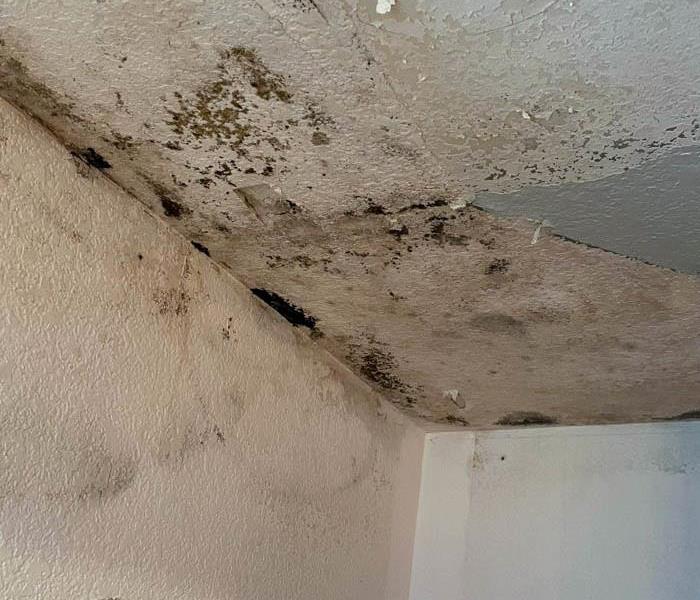 Mold growth in your attic can be a significant concern for homeowners in Thornton, CO.
Mold growth in your attic can be a significant concern for homeowners in Thornton, CO.
Mold can pose a significant challenge for homeowners, impacting the overall condition of your home and its environment. In this blog, we will delve into the causes of mold growth in your attic and offer practical solutions to effectively tackle this issue.
Causes of Mold in Your Attic
- Poor Ventilation: In Thornton, CO, where temperatures can vary greatly, poor attic ventilation is a common culprit for mold growth. When warm, moist air from your home rises into the attic and meets cooler surfaces, condensation can occur, creating an ideal environment for mold.
- Roof Leaks: The occasional heavy rains and snowfall in Thornton can lead to roof leaks. If water finds its way into your attic, it can create damp conditions in which mold thrives.
- Inadequate Insulation: Insufficient attic insulation can cause temperature imbalances, making it easier for moisture to accumulate and mold to grow.
- High Humidity: Thornton's climate can be humid, especially in the summer. If your attic isn't properly sealed or insulated, it can become a breeding ground for mold.
- Improper Exhaust Systems: Appliances like bathroom fans or kitchen vents that exhaust air into the attic rather than outside can contribute to elevated humidity levels.
Solutions for Mold Prevention and Remediation
- Improve Attic Ventilation: Ensure your attic is adequately ventilated. Proper ventilation helps regulate temperature and humidity, reducing the risk of mold growth. Consider installing roof vents or soffit vents if needed.
- Regular Roof Inspections: Have your roof inspected regularly to identify and repair any leaks promptly. Addressing leaks can prevent water from entering your attic and causing mold problems.
- Attic Insulation: Invest in proper attic insulation to maintain a consistent temperature and reduce moisture buildup. Quality insulation can also help lower your energy bills.
- Humidity Control: Use a dehumidifier in your attic to control humidity levels, especially during humid months. Ensure that exhaust fans from bathrooms and kitchens vent outside, not into the attic.
- Mold Remediation: If you already have a mold problem, it's essential to address it promptly. Mold remediation professionals, like SERVPRO® of North Thornton/Brighton, can safely and effectively remove mold from your attic, ensuring it doesn't return.
- Regular Maintenance: Make it a habit to inspect your attic for signs of water damage or mold growth at least once a year. Catching issues early can save you from costly repairs later.
Mold growth in your attic can be a significant concern for homeowners in Thornton, CO. By understanding the causes and implementing the solutions mentioned above, you can protect your home and family from the harmful effects of mold. If you're dealing with a severe mold problem or need professional assistance, SERVPRO® of North Thornton/Brighton is here to help. Contact us today for expert mold remediation and restoration services. Your safety and peace of mind are our top priorities.
5 Common Types of Mold You Might Find in Your Home
5/15/2023 (Permalink)
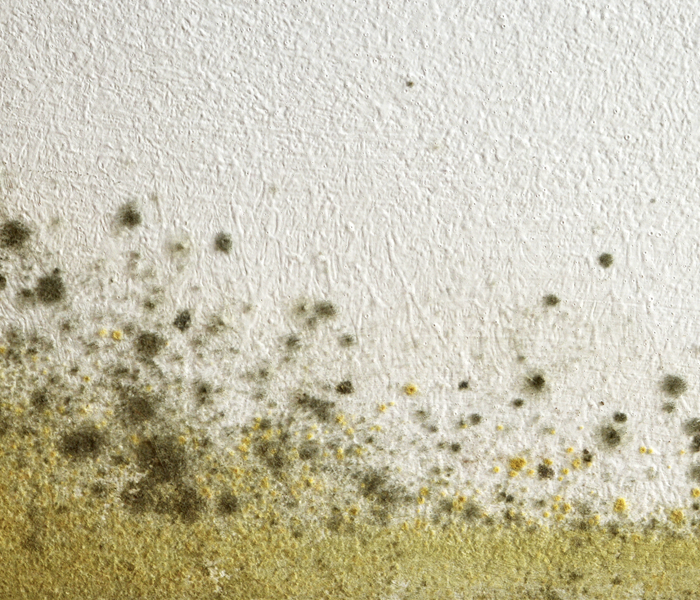 Mold growth can be a serious issue for homeowners.
Mold growth can be a serious issue for homeowners.
As a disaster restoration company, we often deal with mold growth in houses. Mold can be a serious issue and cause structural damage to your home. In this blog, we'll discuss the different types of mold that commonly grow in houses, so you know what to look out for.
Aspergillus
Aspergillus is one of the most common types of mold found in houses. It can grow on a wide range of surfaces, including walls, insulation, and even clothing. Aspergillus can come in several different colors, including green, yellow, and black. If you see mold that resembles powdery or fuzzy growth on surfaces, it may be Aspergillus.
Penicillium
Penicillium is another common type of mold found in homes. It thrives in humid and damp areas, such as bathrooms and kitchens. Penicillium is typically blue or green in color and has a fuzzy or powdery texture. If you see mold growth on food, paper, or fabrics, it may be Penicillium.
Cladosporium
Cladosporium is a type of mold that can grow on a variety of surfaces, including wood, fabrics, and carpets. It's typically green, black, or brown in color and has a velvety or powdery texture. Cladosporium is often found in basements, bathrooms, and kitchens.
Alternaria
Alternaria is a type of mold that typically grows on damp surfaces, such as showers and sinks. It can also grow on walls and ceilings in humid environments. Alternaria is typically green or brown in color and has a fuzzy or woolly texture. If you see mold that looks like a velvety or downy texture, it may be Alternaria.
Stachybotrys
Stachybotrys is a type of mold that thrives in areas with excessive moisture, such as a leaking roof or plumbing issues. It's commonly referred to as "black mold" due to its appearance. Stachybotrys is typically black or dark green in color and have a slimy or sticky texture. If you see mold that resembles a slimy texture, it may be Stachybotrys.
In conclusion, mold growth can be a serious issue for homeowners, and it's important to know what types of mold commonly grow in houses. Aspergillus, Penicillium, Cladosporium, Alternaria, and Stachybotrys are some of the most common types of mold found in homes. If you suspect mold growth in your home, it's best to consult a professional disaster restoration company, such as SERVPRO of North Thornton/Brighton. They can assess the extent of the damage and recommend the appropriate course of action to address the mold growth safely and effectively.
Voted Best Mold Damage Cleanup North Thornton CO Call-Now
5/8/2023 (Permalink)
 We Are Here To Help
We Are Here To Help
Did you find Mold damage?
Our goal is to solve your problem and make your experience stress free.
We can help you with:
- more resources
- better technology
- deep experience and
- current certifications
Because we are a local company with national resources.
We will mitigate and can repair the damage caused by mold in your home or business.
If you have experienced mold or the odor caused by mold and you're looking for immediate assistance fast... That's us.
Our goal is to solve your problem and make your experience stress free
OUR COMMITMENT TO YOU
We can be at your location to prevent further damage and help mitagate and restore your property to its preloss condition.
IMMEDIATE DISPATCH TO YOU
Out techs will be dispatched in minutes after your call.
WE CLEAN IT ALL
We are full spectrum cleaning.
We offer a wide range of restoration and cleaning services for residential and commercial properties that have been affected by water, fire, smoke, mold, and other types of damage.
LIST OF SERVICES
- Water damage restoration
- Fire damage restoration
- Mold remediation
- Storm damage restoration
- Cleaning services
(including carpet cleaning, air duct cleaning, and biohazard cleanup)
- Building services
(including reconstruction and remodeling) - Commercial cleaning services
(including COVID-19 disinfection) - Document restoration and recovery
24/7 EMERGENCY SERVICES
We also provided emergency services and 24/7 support to help customers deal with unexpected disasters and minimize damage to their property.
INSURANCE SUPPORT
Their team of trained and certified technicians use state-of-the-art equipment and techniques to restore properties quickly and efficiently, and we work with customers and insurance companies to help with a seamless and stress-free restoration process.
Call us now -> SERVPRO of North Thorton/Brighton (720) 223-8888
Why Does Mold Smell So Musty?
2/27/2019 (Permalink)
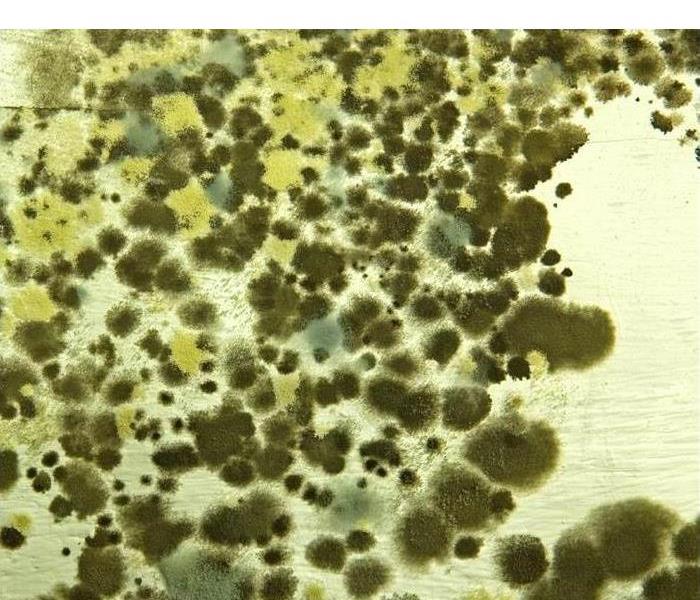 Mold is present almost everywhere, indoors and outdoors.
Mold is present almost everywhere, indoors and outdoors.
Molds can hide out of plain view, but their stink gives them away. A musty odor escapes from behind walls where colonies grow and gives you your first clue you’ve got a problem. You’re smelling the evidence of a mycotoxin in your air.
Why Does Mold Smell So Musty?
How Molds Work
Mold is a microscopic fungus that grows just about everywhere in Thornton, CO. It spreads when its spores land in an environment suitable for supporting growth:
- Wet, damp, or humid climates
- Organic materials like wood, dust particles, or drywall
- Undisturbed areas
In the natural environment, molds help to break down organic material and speed the decomposition process. In your home, they destroy the host material and degrade your air quality.
How Your Nose Works
Many mistakenly believe the moldy odor comes from the spores themselves. It’s a reasonable assumption, but that is not how the human sense of smell works.
The olfactory nerves in your nose send sensory signals to your brain when gasses evaporate close to them. Mold spores are not gasses, and like rocks or metal, they do not themselves have a smell. Your nose smells the esters in the air.
How Molds Release Gasses
During different stages of growth, a mold colony digests food, reproduces, and expires. These natural processes produce byproducts. The mold releases a foul gas along with its mycotoxin.
Your nose picks up on those gasses, and your brain interprets the information as a musty odor. Humans instinctively know to separate harmful odors from pleasant scents. The smell of the mold tells you something is wrong even if you aren’t specifically aware mycotoxins are present.
How Experts Respond to Mold
By the time you detect the musty odors, it’s likely you have an infestation on your hands that requires professional mold remediation services. An expert should evaluate the condition of the mold to determine how far it has grown and what steps are necessary to remove it.
Three Reasons Why Mold May Grow in Your Home
2/26/2019 (Permalink)
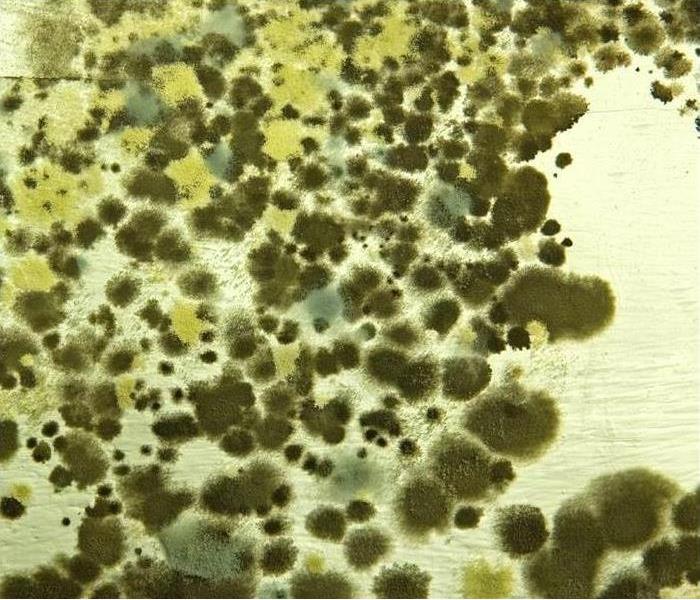 Mold is present almost everywhere, indoors and outdoors.
Mold is present almost everywhere, indoors and outdoors.
Mold may be a constant worry for homeowners or business owners. If it does start growing in a building you own, it can signify extensive restoration, lowered property value, especially if you see black mold. Of course, mold cannot just grow anywhere. The only way mold can grow is if you have a moisture problem. Learn more about the causes of mold growth and keep in mind that if you need mold cleanup services in Thornton, Colorado you should call a restoration company.
Three Reasons Why Mold May Grow in Your Home
- Something Is Broken
If you see mold growing and you do not have any idea what could be the cause, it is most likely that something is broken inside your home. In most cases a pipe could have ruptured, causing water to soak into your walls or floors or ceiling. This may be subtle, without any accompanying noise or noticeable moisture on surfaces. In some cases, a pipe may simply be leaking. Just persistent dripping may be enough water to encourage mold to grow. Keep in mind that moisture has a bad habit of spreading. The broken pipe may be nowhere near where the mold begins growing.
- High Humidity Levels
The subtlest way that mold can start developing in your home is simply high humidity. This can be infuriating because there is very little that you can do about it, short of buying a dehumidifier. Perhaps the best thing you can do is be on the lookout for black mold or other kinds of fungus if you know the humidity is abnormally high.
- Flooding
While there is no way it could happen without you realizing it, flooding is a major cause of mold. Even if your area experienced a minor flood months ago, black mold could have been growing slowly and only revealed itself now. Investigate mold cleanup if you have had a moisture problem.
 When faced with mold damage in your home, it's essential to understand the difference between mold removal and mold remediation.
When faced with mold damage in your home, it's essential to understand the difference between mold removal and mold remediation.






 24/7 Emergency Service
24/7 Emergency Service





